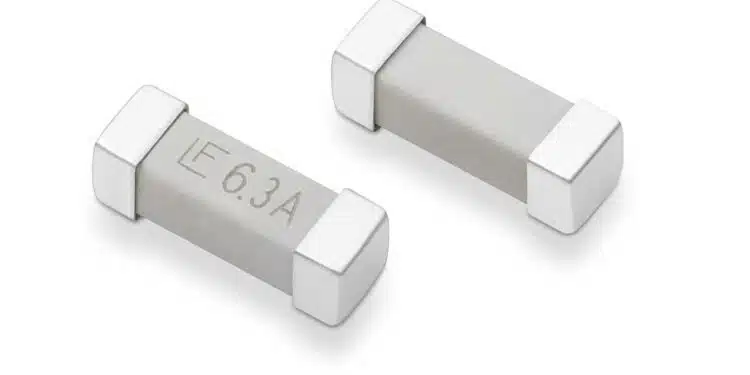Littelfuse, Inc., an industrial technology manufacturing company empowering a sustainable, connected, and safer world, announced the launch of the Nano2® 415 SMD Series Fuse, the first surface-mount fuse from Littelfuse with a 1500 A interrupting rating at 277 V.
Designed to provide true buffering for 250 V applications with unpredictable voltage fluctuations, the 415 Series offers exceptional fault current protection in a compact SMD package, making it ideal for space-constrained applications. (View the video in English, Chinese, or Japanese.)
“This new fuse—our first with a high 1500 A interrupt rating at 277 V—provides electronic designers using legacy through-hole solutions with an option to switch to an SMD part,” said Daniel Wang, Senior Director of Product Management, Over Current–Passives, at Littelfuse.
“By doing so, they can fully automate their assembly process, increasing production efficiency and reducing manufacturing costs.”
Key Features and Benefits:
- Industry-leading interrupting rating – With a 1500 A interrupting rating at 277 V, the Nano2 415 Series ensures protection against high fault currents in critical applications.
- Optimized for fluctuating voltage environments – The 277 V rated voltage provides true buffering in 250 V applications, safeguarding against unpredictable surges.
- Enhanced surge withstand capability – Higher I2t values compared to competitive solutions deliver improved surge and pulse withstand capacity.
- Compact, surface-mount design – The SMD form factor enables engineers to replace through-hole fuses, streamlining automated assembly processes and reducing overall production costs.
Ideal for High-Performance Applications
The Nano2 415 SMD Series is well-suited for a range of applications, including:
- Consumer electronics – Power adapters, chargers, and power supplies
- Industrial systems – Inverters, converters, and instrumentation
- Automotive – EV charging stations, home chargers, and lighting
- Appliances/White Goods – Washers, dryers, and refrigerators
- Home automation – Automated garage doors and smart home systems
A Competitive Advantage in Fuse Technology
The 415 Series provides a drop-in replacement option for other fuses on the market while delivering higher I²t values for superior surge withstand capability. Additionally, it serves as the SMD alternative to the Littelfuse 215 Cartridge Series, offering a higher voltage rating (277 V vs. 250 V) while replacing the existing through-hole cartridge fuse solutions. By transitioning to an SMD fuse, electronics engineers can fully automate their manufacturing processes, leading to faster production, higher throughput, and reduced labor costs—ultimately making their end products more competitive in the market.































